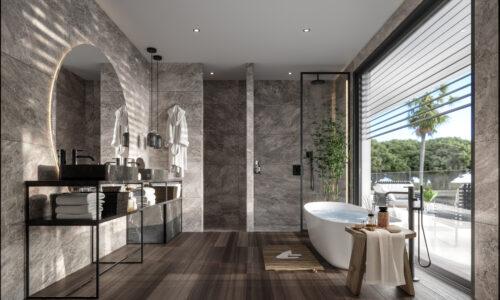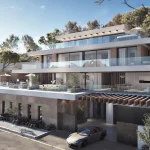
Enhancing Architectural Design with Virtual Reality
- Yissel Álvarez
- May 25, 2023
- 3D Design
- 0 Comments
In today’s world, virtual reality has become an essential tool for the development of any construction project. With advancements in technology and innovation, it offers numerous benefits to professionals in the field of architecture. In this article, we will explore the benefits of virtual reality in architecture and examine the available tools that empower architects and designers to create immersive 3D visualisations.
Understanding Virtual Reality
Virtual reality is a digital tool that simulates computer-generated scenarios, providing users with a realistic experience. In architecture, virtual reality has been effectively employed to simulate buildings and structures from the initial planning stages to the final execution.
By utilising virtual reality technology, professionals can visualise and assess the precise outcome of a structure, whether in 2D or 3D format. This enables them to enhance designs and identify potential flaws before construction begins.
Benefits of Virtual Reality in Architecture
Virtual reality plays a pivotal role in improving both the design and construction processes of any structure. Its application allows architects to visualise and refine their designs before bringing them to life. It also enables builders to have a clear understanding of the desired outcome, minimising surprises along the way.
Let’s explore the benefits that virtual reality offers in the field of architecture:
Boosts Productivity: Virtual reality aims to create the highest level of realism, enabling architects to visualise the final result in a real and specific manner. This not only facilitates their work but also saves time and eliminates unnecessary expenses.
Enhances Client: Experience By incorporating virtual reality into construction projects, architects can provide clients with a superior experience, allowing them to actively participate in the design process. Clients can visualise and customise their future homes, propose finishes, and explore various colour combinations, among other interactive features.
Enables Optimal: Design Virtual reality empowers architects to explore and improve their initial designs by providing a real-world experience. For example, when constructing a public building, architects can simulate emergency evacuation routes and choose the most suitable options. It also facilitates successful lighting distribution, creates better visual effects, and overall improves the quality of work.
Increases Efficiency: The use of virtual reality in architecture translates into greater efficiency and safety in projects by adopting a proactive approach to identifying potential failures or other inconveniences.
Saves Time and Resources: Visualising a project before construction and showcasing it to potential buyers, even remotely, reduces expenses significantly.
Provides a Competitive Edge: Incorporating technological resources like virtual reality not only saves time and resources but also demonstrates the efficiency of your work. This gives you a competitive advantage over other professionals in the field.
The use of virtual reality in architecture has revolutionised the industry, offering professionals a new realm of possibilities to express their creativity. It has streamlined and enhanced the overall process for all stakeholders involved, from designers, architects, and engineers to contractors and clients.
We hope you have enjoyed learning about the diverse applications of virtual reality in architecture. If you’re interested in delving deeper into the world of architecture, stay tuned for our upcoming publications.
If you need assistance with your architectural project and require visualisation services, please feel free to contact us for further information.
Related Posts

- Yissel Álvarez
- October 17, 2023
How Architectural Visualization Elevates Real Estate Sales
How architectural visualization elevates real estate sales to provide prospective buyers with a ..

- Yissel Álvarez
- July 25, 2023
Enhance Your Architectural Project with Effective Animation Shot Types
Enhance your architectural project with effective animation shot types to maximize the impact a ..

